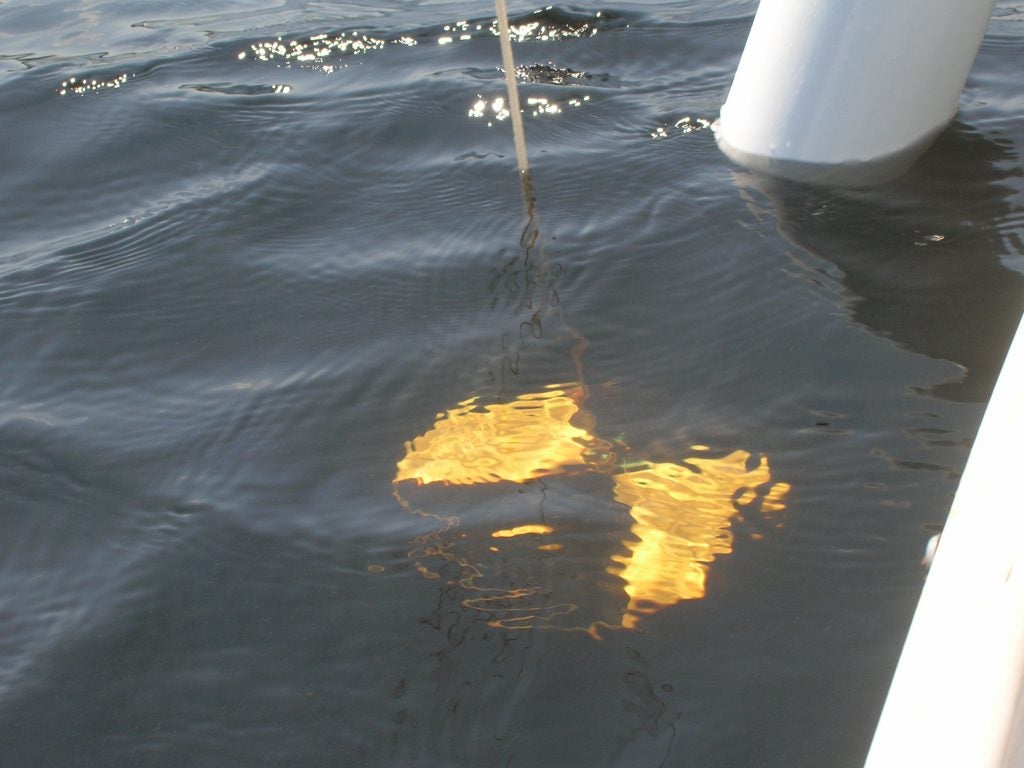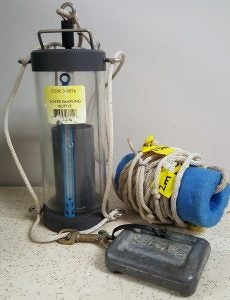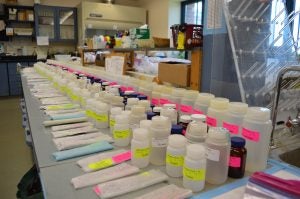What is Monitored?
Water quality analyses performed by URI Watershed Watch primarily provide information on:
- Nutrient Enrichment (Eutrophication)
- Lake Acidification
- Bacterial Contamination
(for water contact and/or recreational purposes)
What is monitored by volunteers
 Water clarity (Secchi depth transparency) measured weekly by Secchi disk and a view tube. It helps to assess seasonal and/or long term trends in lake water clarity and indicates some trends in water quality and eutrophication.
Water clarity (Secchi depth transparency) measured weekly by Secchi disk and a view tube. It helps to assess seasonal and/or long term trends in lake water clarity and indicates some trends in water quality and eutrophication.- Algal density (chlorophyll-a) is determined from biweekly samples collected, processed and frozen. These processed samples are analyzed for chlorophyll content in the URI Watershed Watch analytical laboratory. Algal density can assess nutrient enrichment and eutrophication, complementing the Secchi depth data.
- Dissolved oxygen (DO) is measured biweekly on water samples collected from a depth
 of 1 meter above the bottom of the lake or river using field kits . DO can indicate eutrophication and the overall health of an aquatic ecosystem.
of 1 meter above the bottom of the lake or river using field kits . DO can indicate eutrophication and the overall health of an aquatic ecosystem. - Water temperature is measured weekly at the surface and biweekly at depth using thermometers. It can indicate trends in water quality.
- Alkalinity and pH are analyzed in the URI Watershed Watch laboratory tri-season water collection samples. We can monitor the acidification status of water bodies with these measurements.
- Nutrients (total and dissolved phosphorus, ammonia, total and nitrate-nitrogen) are
 analyzed in the URI Watershed Watch laboratory from tri-season water collection samples. These parameters assess the water bodies degree of nutrient enrichment or eutrophication. These measurements complement the Secchi depth and chlorophyll content measurements.
analyzed in the URI Watershed Watch laboratory from tri-season water collection samples. These parameters assess the water bodies degree of nutrient enrichment or eutrophication. These measurements complement the Secchi depth and chlorophyll content measurements. - Bacteria (enterococci and fecal coliform in marine water) are analyzed in the URI Watershed Watch laboratories from water samples collected in sterile bottles. These analyses screen for suitability for recreational water uses (e.g., swimming, shellfishing) and may indicate sewage contamination.
Routine analyses do not directly screen for most industrial pollutants or pesticides. However, the analyses performed may indicate abnormal water quality conditions. In special circumstances additional analyses can be arranged in conjunction with regularly scheduled analyses.

Data Quality
The URI Watershed Watch program incorporates procedures and protocols recommended and approved by national organizations to ensure that monitoring results accurately reflect the conditions of the sampled water bodies. Results from laboratory staff and volunteers are regularly checked against known standards and quality control samples. State-of-the-art research grade instruments are generally used, permitting high resolution and excellent detection limits. Specific methods of analyses and limits of detection are available upon request.
